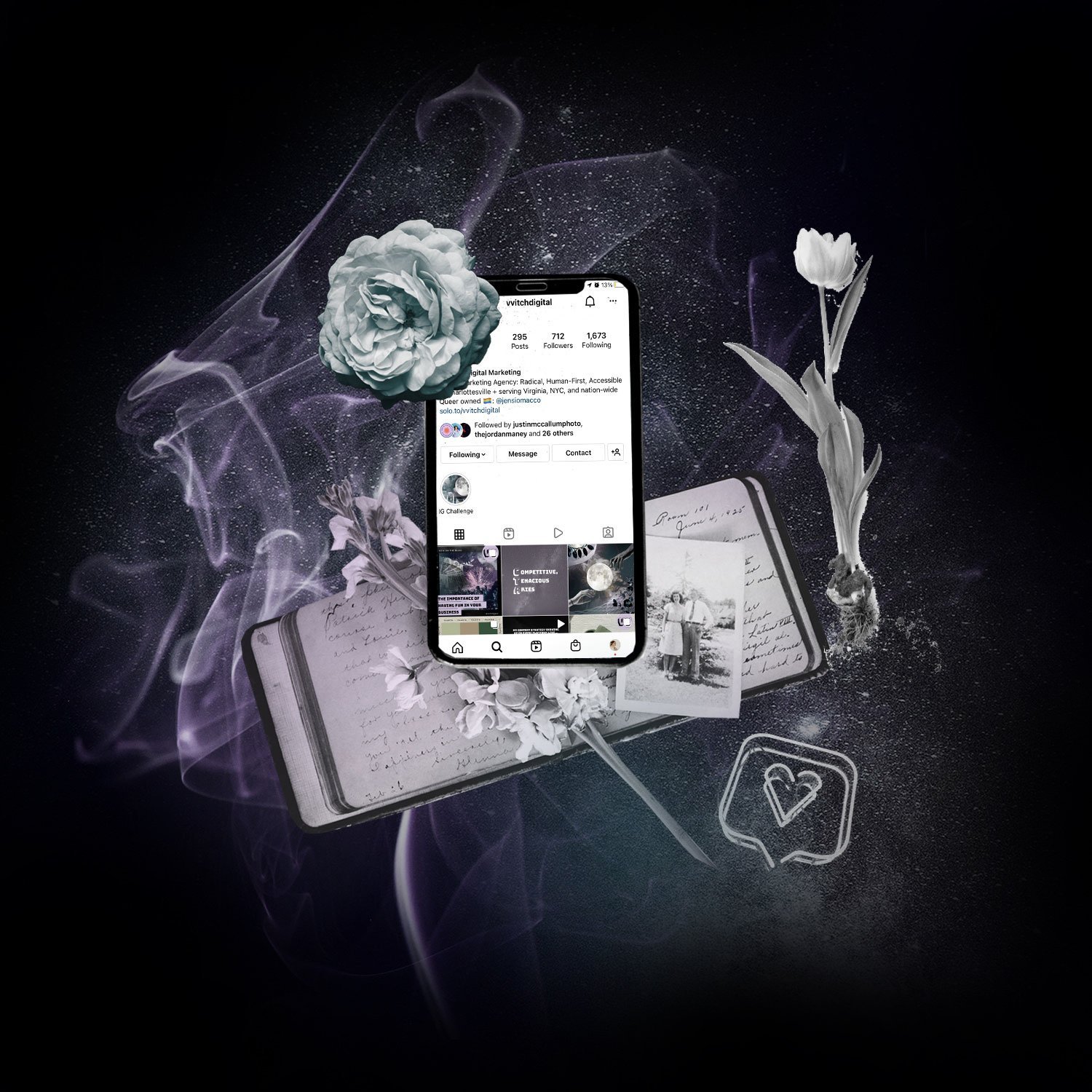How Should You Approach Color Contrast in Making Your Brand Accessible?
As a feminist, human-first, and accessible woman-led agency, VVITCH is not only committed to inclusive work we also provide actionable steps for our clients to make their brands inclusive too.
Of the million and one ways to make your business more inclusive, one of the best practices to normalize is the consideration of people with disabilities when building out your brand and services.
As we shared in our blog post about What in the World is Alt-Text, accessibility is the practice of designing and creating content and services that can be used by all people–regardless of their abilities. For example, creating accessible services looks like building ramps at crosswalks for people who use wheelchairs for mobility, or auto-clearing error messages from an online form submission for people who live with anxiety.
Most digital platforms actively use the Web Content Accessibility Guidelines (WCAG) — established by the World Wide Web Consortium in 1999 to tackle international standards for accessibility on the web. Squarespace and Instagram are a few of the platforms using these guidelines when they build out technology that powers the backend of digital products your brand and consumers use today. This allows you, VVITCH, and many other businesses to focus on making brand content and services as accessible as possible for our audiences.
Understand Color Contrast in Your Branding
A significant area of your brand’s marketing is use of color — whether in your logo, website, product packaging, or content. One of the most common areas that we encounter a lack of accessibility is with branding and color. To understand color contrast in your brand requires you to assess potential blindspots.
Color contrast is a major concern since many people have vision impairments — such as cataracts, color blindness, or low contrast vision. In fact, an estimated 32.2 million adults in the US have some form of vision impairment. This makes it difficult to read and/or understand your logo or text if there is not enough contrast between it and the background color these elements are on top of. Don’t worry, you can ensure that your brand’s content is readable.
An initial step for your brand to take is to try setting a higher contrast ratio between the foreground color of your text and the background color on any text-based branding (i.e. website). For example, black text against a white background has the highest contrast and is therefore the most legible to people. Yet, brands don’t always want just black text on their websites. There are areas you will need to decide how to design with these inclusive steps in mind, while remaining consistent with your brand aesthetic.
Thankfully, the accessibility guidelines we mentioned have set contrast ratios that establish what level of contrast is necessary for text and background colors beyond the binary black or white. There are various requirements for bigger text in titles or headers compared to smaller paragraph text that you should also practice including in how you develop your brand’s content. The best practice that we actively use at VVITCH is to use a color contrast checker to confirm color combinations have enough contrast to be truly legible to everyone.
An initial step for your brand to take is to try setting a higher contrast ratio between the foreground color of your text and the background color on any text-based branding (i.e. website).
These steps will likely lead to more brand awareness for your business because your audience will be able to recognize your logo and content more easily.
To learn more about including accessibility in your brand’s marketing check our posts as we continue to share our knowledge and experience making inclusive work.
You can also hire VVITCH for accessibility services, too!
From website audits to site maintenance, our team is here for you.
More to Help You Make Your Brand Accessible:
Meet the Authors
Brittinee Phillips, Copywriter
Brittinee has worked in marketing for a little over ten years. She has a passion and talent for storytelling. Brittinee's philosophy is that storytelling is the most integral part of the consumer and product experience, which is why she makes it a focal point in her approach to product and brand messaging.
Shannon Mackenzie, Web Content Manager
Shannon is an artist, potter, and activist who has worked in marketing and public relations for small businesses and nonprofits for 3 years. Since moving to Richmond in 2018, she’s been supporting local feminist entrepreneurs change their communities.







